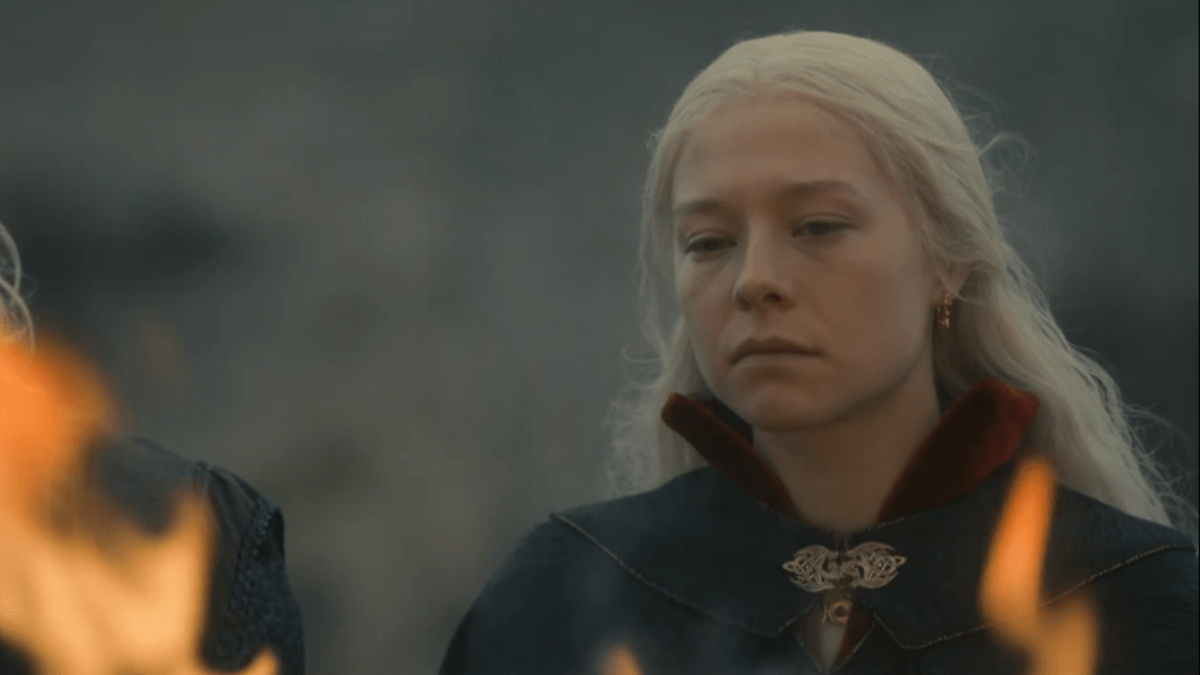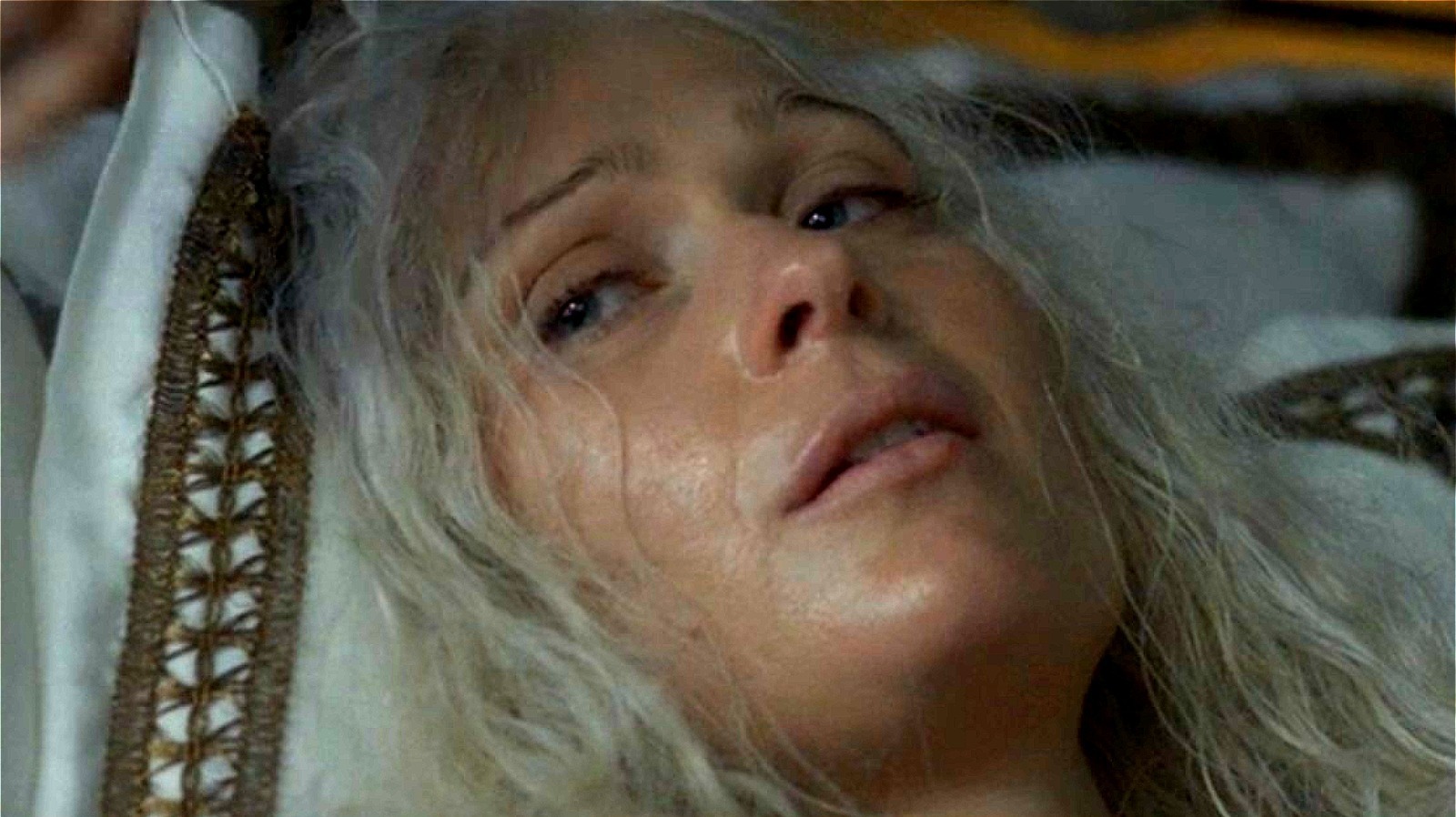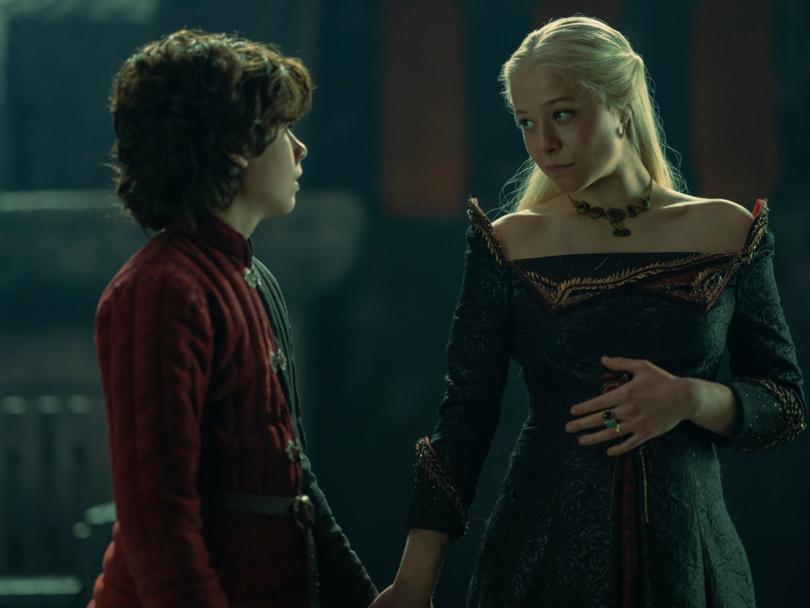
Game of Thrones spinoff House of the Dragon has wrapped up its first season. Despite mixed reviews it has proven to be a success — Deadline reported that the show has given its network HBO its biggest ratings since the GoT finale in 2019. Let’s hope it improves in Season 2.
These huge viewership figures aren’t surprising given how much hype was around this show. Ahead of the House of the Dragon premiere, ones of the show’s writers Sara Hess proudly revealed that the series wouldn’t depict on-screen scenes of sexual violence — a welcome change to its needlessly violent predecessor.
Before it aired, co-showrunner Miguel Sapochnik also told the Hollywood Reporter that the series “pulls away” from the loads of sex scenes that made up every goddamn ep of Game of Thrones.
Like other female fans of GoT, I looked forward to a new era that did away with traumatic rape scenes, gratuitous nudity and endless moments of characters lustily bumping uglies. And House of the Dragon delivered. What I enjoyed about the series was its focus on the actual plot, rather than on distracting levels of tits and ass.
But House of the Dragon let us down in another way. In both the opening episode and the finale, we were treated to jarringly traumatic birth scenes with no trigger warning to protect us.
In Episode One, the much-anticipated labour of Queen Aemma Targaryen (Sian Brooke) was intercut with violent jousting scenes from a tourney in King’s Landing. It was a sledgehammer-subtle nod to Aemma telling her daughter Rhaenyra (Milly Alcock) in a previous scene that “we have royal wombs, you and I. The child bed is our battlefield.”
Aemma’s labour was difficult and we quickly learned the baby was in breech position, meaning its feet, rather than its head, were pointing toward the birth canal. A mild complication in the age of modern medicine, but in the fictional old-timey world of House of the Dragon it’s basically a death sentence for both mother and baby.
King Viserys (Paddy Considine) decided that the maesters should perform a non-consensual caesarean section on Aemma, prioritising his longed-for male heir over his wife’s life. We saw Aemma, fully conscious and with no form of anaesthesia, screaming as the procedure was graphically performed via close up shots. Both mother and baby died following the birth.

I attended a premiere of the first episode where it was shown in a movie theatre. Important background note about me: at 37 weeks into my pregnancy, I was told my baby was in the breech oblique position (sideways), and that I had to have a planned caesarean section to safely deliver my child.
At the time, I was crushed by this news. Something about this procedure felt cold and clinical, and I was understandably nervous about having 12 (!) layers of skin, muscle and tissue being cut open to get the baby out.
It was a time of huge anxiety for me. Breech oblique is a dangerous position for a baby to be in. I was told that if I went into premature labour, the placenta and cord could come out of the birth canal before the baby. This would cut off oxygen to the baby and lead to me potentially losing fatal amounts of blood.
Doctors warned me to remain close to a hospital during my last few weeks of pregnancy and to rush to emergency at any sign of early labour. As a friend quite cheerily said when I explained the situation to her: “Oh, so in ye olde times you both would have died?”.
It was blunt, but it was true. I was thankful to be living in 2020 and not 1820, because my baby and I actually had a shot. My daughter was safely delivered at 39 weeks via caesar, but it wasn’t until the premiere episode of House of the Dragon, when I watched a brutal, non-consensual c-section being carried out graphically on a huge movie screen that I realised I was holding on to some trauma from the stress of that time in my life.
As the scene played out in front of me and Aemma screamed, I felt sick, then faint. I covered my eyes, broke out into a cold sweat and willed the scene to be over. I thought of other people, who might have had terrifying emergency c-sections or had lost their babies, and how they might feel watching this scene.
The scene stayed with me for the rest of the episode. I can barely remember what else happened. It made me angry, especially when I realised the ep had been directed by Miguel Sapochnik, who had so smugly proclaimed about the lack of gratuitous sex scenes in House of the Dragon. To me, what he did was just swap one unnecessarily graphic thing for another, and pat himself on the back for it.
Out of principle I almost didn’t watch the rest of the series, but with some trepidation I persisted. I came to enjoy the storytelling and yes, the exploration of how women were treated in this fictional world. The four (out of 10) episodes directed by the two female directors Clare Kilner and Geeta Vasant Patel were incredible. I loved the strong female lead characters and became invested in how the plot would play out.
Then, I watched the finale.
After she learned of the death of her father Viserys and that her younger half-brother Aegon (Tom Glynn-Carney) had usurped her to claim the Iron Throne, Rhaenyra (Emma D’Arcy) clutched at her pregnant belly.
As her husband (and uncle) Daemon (Matt Smith) schemed, Rhaenyra began to bleed. She was rushed to another room where she went into premature labour. She refused the help of midwives, and prepped her elder sons for her potential death. Then she set about having a graphic pregnancy loss on television.
This one hit me in a rush. As the camera zoomed in between the character’s legs and a gory sequence played out, I burst into hysterical sobs that shook my entire body. See, before I had my daughter, I went through a miscarriage. And although I carried my next pregnancy to term and welcomed a healthy child into the world, the trauma of losing your baby never leaves you.

Though it occurred earlier in my pregnancy than the fictional character on my screen, elements of what she experienced actively mirrored what I went through. Unlike House of the Dragon, I won’t go into graphic detail here. But suffice to say it was enough to activate my long-buried trauma and send me into a panic attack-like state. “I can’t watch this,” I gasped, and once again covered my eyes.
My partner alternated between saying “Oh my god that’s fucked” and trying to fast forward the scene as he rushed to comfort me. I didn’t know that I was still processing the grief and trauma of my miscarriage, but thanks to a horrific scene that came with no warning, I was forced to confront it four years later when I least expected to.
Once again my mind went to people close to me who have suffered stillbirths and who would have found that scene even more triggering. Though I didn’t watch it in full, a friend told me that it showed everything in vivid, heartbreaking detail.
House of the Dragon got a lot of things right but it really, really got this wrong. To be so self-satisfied about sexual violence happening off-screen and then to show two scenes of birth trauma without warning is in my eyes, despicable.
It’s trauma porn, and it didn’t shock me to learn that the finale episode was directed by one of the show’s two male directors, Greg Yaitanes.
Miguel Sapochnik has actually exited the series, so to remaining showrunner Ryan Condal, I say this: if you want to tell women’s stories, allow a woman to tell them. Get your female directors on these kind of episodes. And for god’s sake, get a fucking trigger warning.
Childbirth is a battle for everyone who goes through it, and the show absolutely hit that on the head. But there are other ways to get that across than with litres of prop blood and extreme close-ups.



